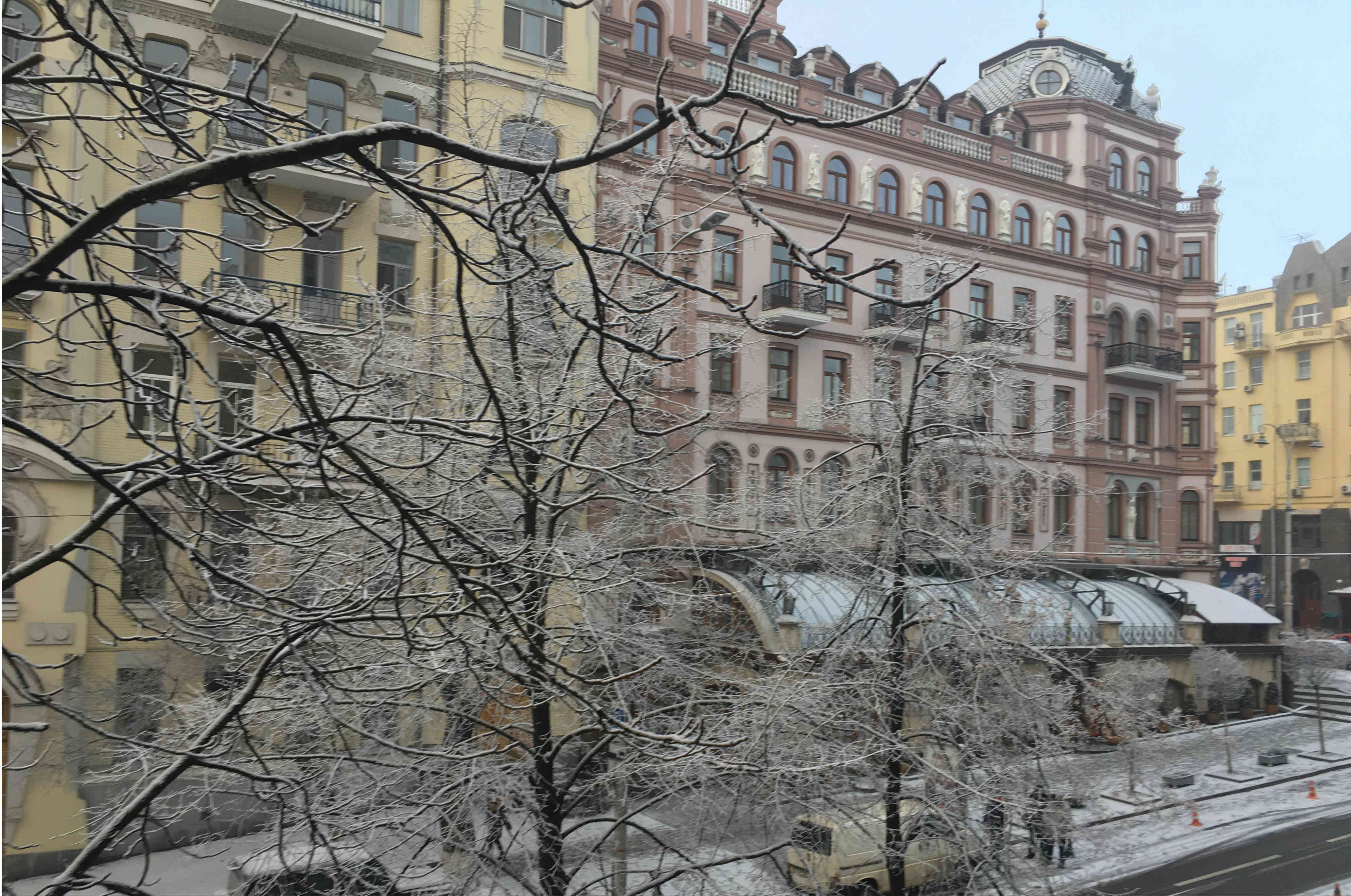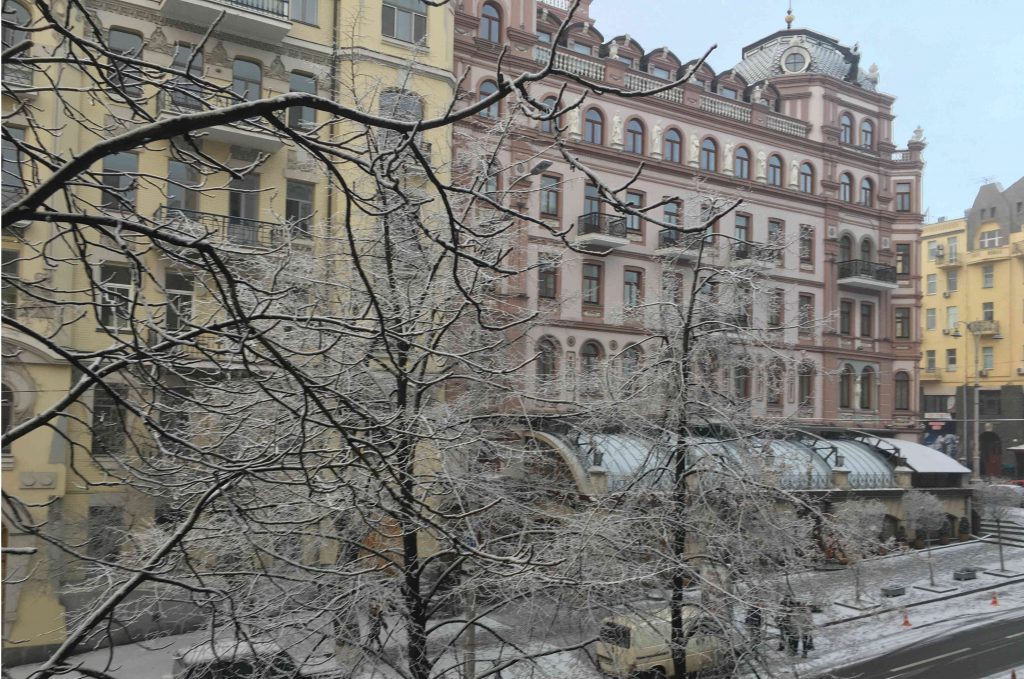 When assessing Ukraine, armchair economists love the macro perspective: sweeping views based on large data sets.
When assessing Ukraine, armchair economists love the macro perspective: sweeping views based on large data sets.
Let’s look at the micro.
Despite the fresh snow, let’s walk my 150-meter long block on Rohnidynska Street and take the pulse of Ukraine’s economy. One year after I signed my apartment lease, six original businesses survive on my block. In the same time, sixteen new businesses have opened up, some in vacant spaces.
Rohnidynska starts at Velyka Vasylkivska Street, renamed before I arrived from its Soviet name: Chervonoarmiiska, or Red Army, Street.
Next to Pervak, a venerable restaurant on the corner, a blue and white sign announces the new Ukraine office of Boyden, the New York-based international executive recruitment company. Two doors down, the same building hosts Green Forest, the freshly-opened branch of a new—and demanding—English language school.
On the ground floor, a produkti, or neighborhood supermarket, vanished last spring to be replaced with Mallmen, a chic clothing store.
Next door, white banners announce the imminent opening of Balmelli Ristorante. In a few days, this Italian restaurant is to succeed a 1990s, Spanish-themed restaurant that featured a dusty décor of fake helmets, shields, and swords.
Two doors down, on the corner, stands Reef, a new fishbowl restaurant favored by models and people who want to be seen. Part of a trend, Reef joins four restaurants within 100 meters that all carry English names—Beef, Milk, Touch, and Dogs and Tails.
Across the street, but still on the same block, a vaguely familiar blue and white AMC sign just went up. It is the Academic Medical Center, a clear attempt to rip off the familiar blue and white logo of the American Medical Center, a brand long known to expats here.
Further up Rohnidynska, beyond Hookah Charlie and past the statue of Yiddish writer Sholem Aleichim, stands my building, a Czarist-era brick landmark with a plaque commemorating a writers circle that met here in the 1890s.
One weekend last June, Aunt Klara’s pastry shop opened in a little-used ground floor commercial space. Now, every weekday morning there is a five-minute wait for fresh croissants. Next door, beyond the new travel agency, stands Tiflis, a Georgian restaurant that took over a moribund steakhouse.
One year ago, when I signed my lease, my entryway was Soviet shabby. Now, it sports new signs: for Lime, a manicure salon; Kapriz, a beauty salon; Buro 38 August, a women’s clothing store; a print shop; and a tropical fish and aquarium store.
On other side of an archway, at Rohnidynska 1, the foreign currency exchange shop recently replaced its standard green and red rate display for an eye-catching two-meter high digital sign. Next door, a major office renovation has been completed for a space that previously seemed to be a storage depot for dead photocopying machines.
Last week, my neighbors suffered a major attack of entryway envy when the exchange shop foyer emerged after six weeks behind plastic tenting. The building owner—or a new prestige tenant—had invested thousands of dollars in fine stone steps, a metal handrail, and a spiffy front door.
Adjacent to this upscale entrance glows the yellow neon sign of Cockpit, a thriving three-story restaurant and drinks club, complete with a winterized balkon overlooking Rohnidynska.
In another disorienting turn last year, I ducked one morning into my street’s entrance to Metrograd. This is central Kyiv’s 500-meter long underground shopping arcade that travels under avenues and allows residents to avoid bad weather. Unexpectedly, I found myself trapped in a religious ceremony. A Ukrainian Orthodox priest was blessing the new $24 million Phase II renewal of Metrograd. With 17,000 square meters and about 100 stores, Metrograd now draws 50,000 visitors a day.
It is likely that macro analysis has its merits. I realize that a professor in Rhode Island may have known something I did not when he wrote in The Guardian last March that Ukraine risks becoming a failed state.
For outsiders, the secessionists in Donetsk and Luhansk drive the Ukrainian narrative in the world press, while controlling only 3 percent of a nation larger than France. No matter that the drive time from Kyiv to Donetsk is nine hours, the same amount of time it takes to drive from Rhode Island to North Carolina.
Here on the ground, on Rohnidynska, I watch my block.
What I see are various Ukrainian economic actors individually coming to the same conclusion: 2017 is the year to invest.
James Brooke is Editor in Chief of the Ukraine Business Journal, a newly launched online news site specializing in business information about Ukraine.
Image: A winter view of Rohnidynska Street in Kyiv, Ukraine. Credit: James Brooke
